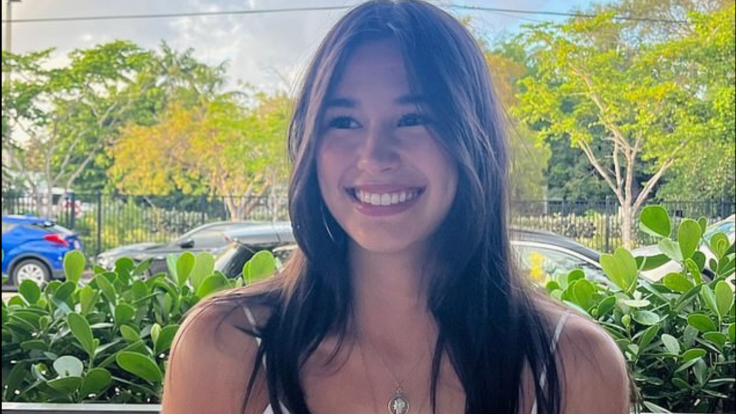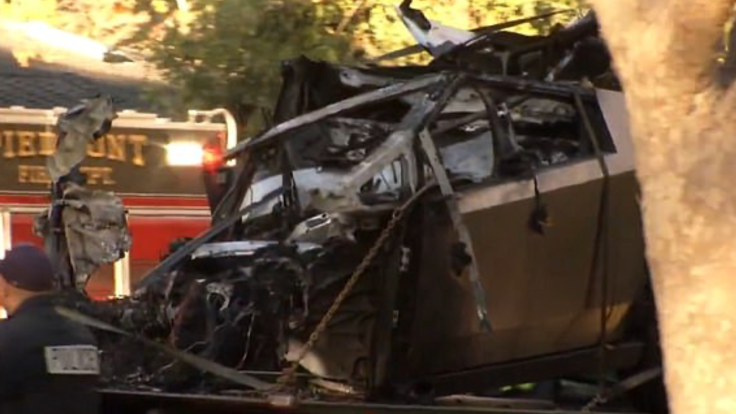Who Is Krysta Tsukahara? Despite Alcohol Factor, Parents Sue Elon Musk's Tesla For 'Conscious Disregard' Of Safety After Fatal Fiery Crash
Family lawyers say concealed manual releases and an over-reliance on powered doors converted a survivable collision into a fatal entrapment

Krysta Tsukahara survived the impact of a high-speed crash on 27 November 2024 but died trapped inside a burning Tesla Cybertruck, her parents now allege in a wrongful-death suit that accuses Tesla of 'conscious disregard' for safety.
The 19-year-old arts student was one of three young people who died when the Cybertruck struck a retaining wall and a tree in Piedmont, California, at 03:07 on 27 November 2024; investigators say the vehicle erupted in flames and rescuers struggled to open its doors.
Her parents, Carl and Noelle Tsukahara, have filed an amended complaint in Alameda County Superior Court seeking access to the vehicle's data and alleging that a concealed manual release and an over-reliance on powered door systems turned a survivable crash into a fatal confinement.
The suit, backed by the family's lawyers, frames the claim against Tesla as part of a pattern of safety complaints and recalls around the Cybertruck's design.
The Crash and the Evidence
Police and the California Highway Patrol's Multidisciplinary Accident Investigation Team (MAIT) reconstructed the event using the vehicle's event data recorder and on-scene evidence.
MAIT's report shows the Cybertruck was travelling at roughly 130 kilometres per hour (about 80.8 miles per hour), in the seconds before the collision, with pre-crash accelerator input recorded at high throttle percentages; the agency determined the vehicle's speed range immediately before impact at about 77–84 mph. The team also logged retrieval of the car's data modules and storage media as evidence.

Autopsy and toxicology documents released by the Alameda County Coroner's Bureau show all three people who died had alcohol and cocaine in their systems, and that the immediate cause of death was asphyxia due to inhalation of combustion products, not blunt-force trauma from the impact.
Those results are central to the public explanation for the crash, but, as the Tsukaharas argue, they do not answer why occupants who survived the initial collision could not escape the vehicle as the fire took hold.
Toxicology, Family Grief and the Lawsuit
For the Tsukahara family, the toxicology findings complicate but do not settle the moral question at the heart of the suit: why their daughter, who the family says was alive after the crash, could not open the door and flee the smoke and flames.
'Krysta was still alive', Carl Tsukahara told local reporters; 'she died a terrible death. It's going to haunt us forever.' The family's attorneys say their purpose in filing a wrongful-death action is to secure vehicle records: software logs, crash data, and internal diagnostics, that they contend have been withheld.
The original complaint filed in April named the deceased driver's estate and the vehicle owner; the amended complaint now adds Tesla, alleging the Cybertruck's electronically operated door systems and the location and concealment of manual override releases made egress difficult or impossible when electrical power failed.

The plaintiffs' lawyer has said an independent inspection suggested the rear door would not open and that the emergency manual lever was concealed, requiring the removal of a panel and the pulling of a cord that an untrained occupant or rescuer would not intuitively know to locate.
Allegations Against Tesla and the Regulatory Context
The suit presses Tesla not merely for answers but for accountability, arguing that the company long knew about the risks of relying on powered door mechanisms and failed to design obvious, usable manual overrides.
Plaintiffs point to a growing regulatory and legal backdrop: NHTSA recall notices and formal defect reports have flagged various Cybertruck and Tesla component issues since the model's introduction, and federal investigators have probed door-related complaints. The complaint cites incidents and recalls to allege notice and the foreseeability of entrapment when electrical power is lost or damaged by collision and fire.
The litigation also arrives amid a wave of high-profile rulings and verdicts that have encouraged families to pursue automakers in court: in August, a Florida jury ordered Tesla to pay £180.3 million ($243 million) in a separate Autopilot-related case, a ruling that has sharpened scrutiny of Tesla's engineering, marketing, and post-crash data practices.
That decision, and a string of other suits and recalls, provide the legal and public-policy backdrop against which the Tsukahara family's claim will proceed.
Krysta Tsukahara's parents say they want answers; the courts will decide whether the Cybertruck's design and the company that made it contributed to a death the family describes as avoidable.
© Copyright IBTimes 2025. All rights reserved.




















